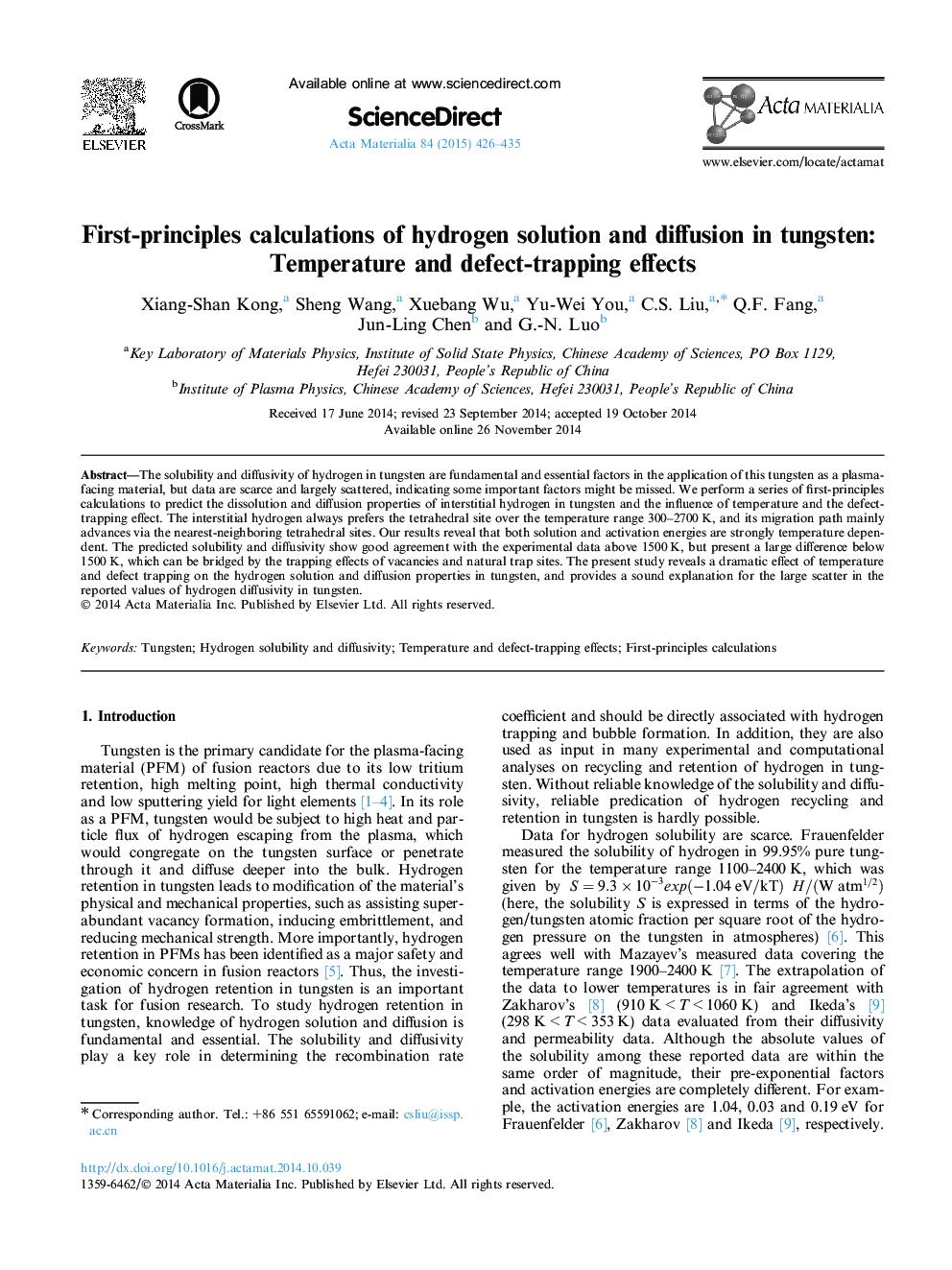| Article ID | Journal | Published Year | Pages | File Type |
|---|---|---|---|---|
| 1445450 | Acta Materialia | 2015 | 10 Pages |
The solubility and diffusivity of hydrogen in tungsten are fundamental and essential factors in the application of this tungsten as a plasma-facing material, but data are scarce and largely scattered, indicating some important factors might be missed. We perform a series of first-principles calculations to predict the dissolution and diffusion properties of interstitial hydrogen in tungsten and the influence of temperature and the defect-trapping effect. The interstitial hydrogen always prefers the tetrahedral site over the temperature range 300–2700 K, and its migration path mainly advances via the nearest-neighboring tetrahedral sites. Our results reveal that both solution and activation energies are strongly temperature dependent. The predicted solubility and diffusivity show good agreement with the experimental data above 1500 K, but present a large difference below 1500 K, which can be bridged by the trapping effects of vacancies and natural trap sites. The present study reveals a dramatic effect of temperature and defect trapping on the hydrogen solution and diffusion properties in tungsten, and provides a sound explanation for the large scatter in the reported values of hydrogen diffusivity in tungsten.
